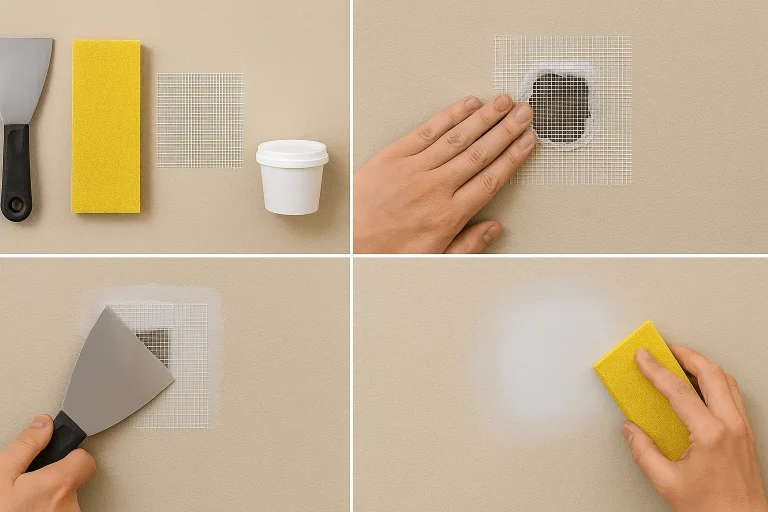How to Install Vinyl Plank Flooring
To install yourself, vinyl plank flooring is the simplest and most popular type of flooring. It is available in styles that look like wood or tile, also it is waterproof and scratch-resistant. It is choose for kitchens, bathrooms, and living spaces by many homeowners. If you want to know how to install vinyl plank flooring, so the process is so simple that most people can handle it without professional help. You can update your floors by yourself with just a little time and careful work.
Preparing the Area for Flooring
With a proper preparation every flooring job starts. The room should be completely empty. If there is furniture, rugs, and anything else in the room Take them out. If there is any old carpet or damaged flooring, take it out. Vinyl plank flooring works best on a clean, dry, and level surface. If your floor is not smooth, use a leveling compound to fix dips or bumps.
You should also clean the subfloor. Dust, dirt, and small rocks can affect how the vinyl planks sit. Use a vacuum to clean the area, then check for moisture. Vinyl is water-resistant, but if the subfloor is wet, it must dry fully before work begins.
Let the planks sit in the room for at least 48 hours before installing. This allows them to adjust to the room’s temperature and humidity, which helps avoid shifting or warping later.
Choosing the Right Direction and Layout
Before placing any planks, decide on the direction they should run. In most rooms, vinyl planks look best when they run parallel to the longest wall or follow the path of incoming natural light. This gives the room a more open feel.
Measure the width of the room and divide it by the width of one plank. This tells you how many full planks will fit across. If the last row is going to be very narrow, you can trim the first row slightly so both ends are wider. This makes the floor look more balanced and professional. Also, check the doorways and vents. These areas may need special cuts, so planning for them ahead of time makes the work smoother later.
Beginning the First Row
Start in a corner of the room, placing your first plank with the tongue side facing the wall. Use spacers to leave a small gap between the plank and the wall. This space allows the flooring to expand and contract without pressure.
Attach the next plank by angling it slightly and locking the tongue into the groove of the first plank. Press it down until it clicks. Continue this pattern along the first row. If the last plank in the row doesn’t fit perfectly, measure the remaining space and cut the plank to size. Use a utility knife or vinyl plank cutter to make clean cuts. Always cut from the top side of the plank for best results.
Building the Second and Third Rows
For the second row, start with a piece that is shorter or longer than the one that began the first row. This creates a staggered pattern, which adds strength and a natural look. You should avoid having joints line up directly with those in the row before.
Insert the long side of the new plank into the groove of the row behind it. Once the edge is locked, press the short side into place. If necessary, use a tapping block to gently secure a tight fit. Continue this process for each row, always checking that planks are flush with one another and fully connected. As you build rows, step back every few boards to inspect your alignment. If the planks start to shift out of line, gently tap them back into place before continuing.
Dealing With Doors, Corners, and Vents
In most rooms, there will be places where a full plank won’t fit, such as near a doorway, around a vent, or next to a cabinet. For these areas, trace the shape of the object onto the plank with a pencil. Use a utility knife or jigsaw to cut the shape.
In doorways, it may help to trim the bottom of the door frame. This allows the vinyl plank to slide underneath for a cleaner, more finished look. Be careful not to cut too high or damage the door frame. A small handsaw or oscillating tool works well for this step.
Building the Final Row
When you reach the last row, you’ll likely need to trim the width of the planks to fit the remaining space. Measure the gap from the last full row to the wall, subtracting the space left for expansion. Use a straightedge to mark the cut line on each plank.
Score along the line with a utility knife, then snap the board downward to break it cleanly. Carefully place the trimmed planks into position using a pull bar to help lock them in if space is tight. Once the final row is complete, remove all spacers around the room and inspect your work. Make sure all boards are tightly joined and evenly aligned.
Adding Final Touches
To complete the installation, add baseboards or quarter-round molding to cover the expansion gaps along the walls. Nail or glue the trim to the wall—not the floor—so the vinyl planks can still move if needed.
If your floor ends at another type of surface, such as carpet or tile, install a transition strip. These help protect the edges of the planks and give a smooth shift from one surface to the next. Clean the surface of the floor using a soft broom or vacuum. Avoid using wet mops or harsh cleaners right away. Vinyl is easy to care for, but the joints may take a day or two to settle fully.
Loving the New Floor
Now that you know how to install vinyl plank flooring, you can feel confident tackling this kind of project in any room of the house. The process is straightforward and doesn’t require expensive tools. With basic measuring, cutting, and locking techniques, you can transform your space in just a day or two.
The finished floor looks great, handles foot traffic well, and resists spills and damage. If one plank ever gets damaged, you can remove and replace just that section without tearing out the entire floor. This makes vinyl plank flooring not only easy to install but also easy to maintain over time.

